In Indiana, a captivating enigma unfolds beneath the moonlit skies; eight distinct owl species gracefully inhabit the diverse landscapes of this Midwestern state.
From the mysterious barred owl with its haunting hoots echoing through the woodlands to the stealthy great horned owl perched atop lofty branches, Indiana provides a haven for a remarkable array of these nocturnal predators.
These majestic creatures, embodying both beauty and mystery, contribute to the rich biodiversity of Indiana’s ecosystems.
As guardians of the night, the eight owl species play crucial roles in maintaining ecological balance, preying on small mammals, and acting as indicators of environmental health.
Join us on a journey through the moonlit forests and open fields of Indiana as we unravel the secrets of these mesmerizing feathered inhabitants, exploring their significance in the intricate tapestry of the state’s wildlife.
8 Owls in Indiana
Indiana’s moonlit landscapes host a captivating secret: eight owl species. From the barred owl’s haunting calls to the great horned owl’s silent flight, these nocturnal wonders enchant Indiana’s diverse ecosystems.
1. Great Horned Owl
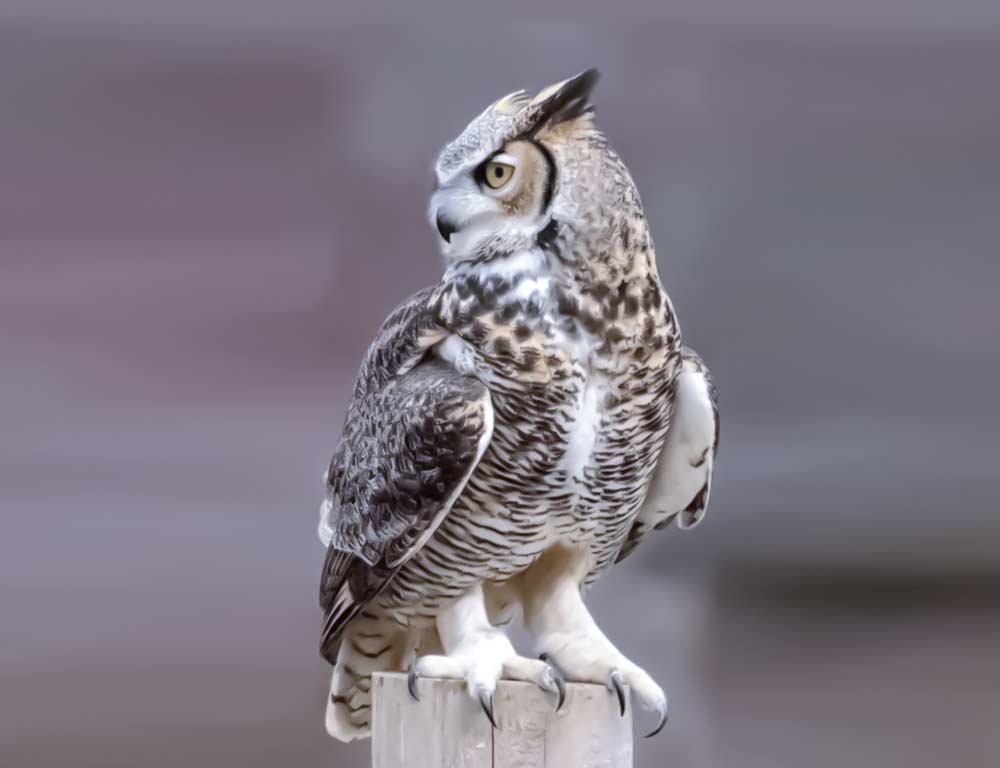
- Scientific Name: Bubo virginianus
- Population: Abundant
- Life Span: Up to 20 years
- Size: 18-25 inches
- Weight: 2-5.5 pounds
- Food: Varied diet including mammals, birds, and reptiles
- Wingspan: 3.3-4.8 feet
- Status: Common
The Great Horned Owl, a majestic nocturnal predator, thrives in Indiana’s diverse habitats. With its distinctive tufted “horns” and piercing yellow eyes, this owl is a formidable presence in the state’s ecosystems.
It preys upon mammals, birds, and reptiles, possessing a broad diet and showcasing its adaptability. Its exceptional hunting skills, aided by keen vision and silent flight, contribute to its dominance.
Nesting in various locations, from tree branches to abandoned nests, the Great Horned Owl demonstrates versatility in adapting to its surroundings.
With a lifespan of up to two decades, this species plays a vital role in Indiana’s ecological balance, making it a common and enduring symbol of the state’s wildlife.
2. Barn Owl

- Scientific Name: Tyto alba
- Population: Declining
- Life Span: 2-5 years
- Size: 12-15 inches
- Weight: 1-2 pounds
- Food: Mainly small mammals
- Wingspan: 3.3-3.9 feet
- Status: Threatened
The Barn Owl, with its heart-shaped face and distinctive ghostly appearance, graces Indiana’s landscapes.
However, its presence is marked by a concerning decline. Preferring open habitats, this owl primarily feeds on small mammals, exhibiting remarkable silent flight to ambush its prey.
Facing threats from habitat loss and human activities, the Barn Owl’s population status reflects its vulnerability. Despite a relatively shorter lifespan of 2-5 years, this species is a crucial indicator of environmental health.
Conservation efforts are essential to secure the Barn Owl’s future in Indiana, as its decline signals potential imbalances in the state’s ecosystems.
3. Barred Owl
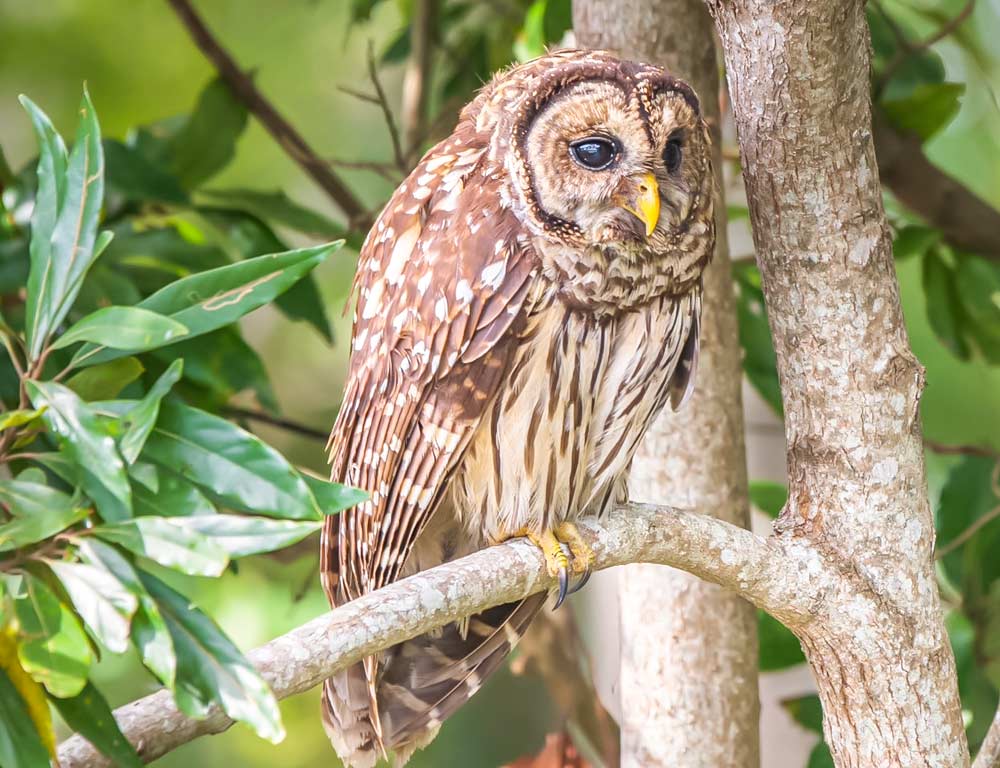
- Scientific Name: Strix varia
- Population: Stable
- Life Span: Up to 10 years
- Size: 16-24 inches
- Weight: 1-2.5 pounds
- Food: Small mammals, birds, amphibians
- Wingspan: 3.2-3.8 feet
- Status: Least Concern
The Barred Owl, recognized by its distinctive hooting calls echoing through Indiana’s forests, is a resilient and adaptable species. With a stable population, this owl thrives in various wooded habitats.
Preying on small mammals, birds, and amphibians, the Barred Owl showcases its versatility in food sources.
Its cryptic plumage aids in camouflaging among the trees, making it an effective nocturnal hunter. With a lifespan of up to 10 years, this owl contributes to the state’s biodiversity.
The Barred Owl’s adaptability and ability to coexist with human-altered landscapes position it as a least-concern species.
Observing the Barred Owl’s lifestyle offers insights into the harmonious relationship between this avian predator and Indiana’s wooded environments.
4. Eastern Screech Owl
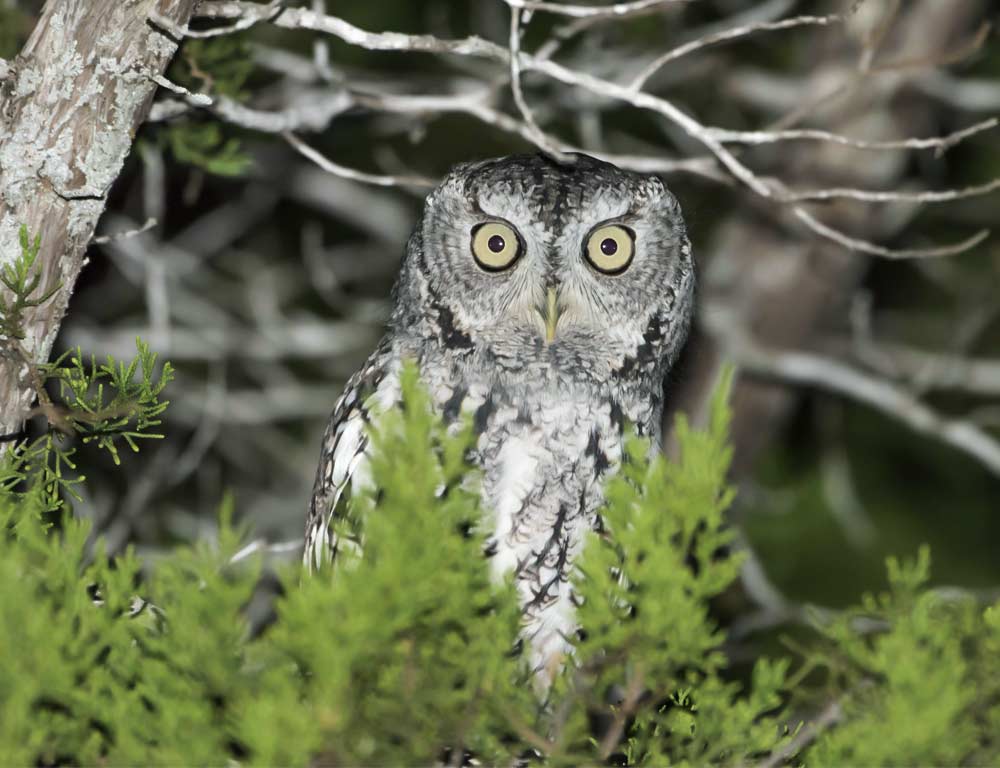
- Scientific Name: Megascops asio
- Population: Common
- Life Span: 8-10 years
- Size: 6-10 inches
- Weight: 4-9 ounces
- Food: Mainly insects, small mammals, and birds
- Wingspan: 18-24 inches
- Status: Least Concern
The Eastern Screech Owl, a master of camouflage, is a common resident in Indiana. Adapting well to various habitats, from woodlands to urban areas, this small owl primarily feasts on insects, small mammals, and birds.
Its haunting trill or soft whinny often announces its presence during the night. With a life expectancy of 8-10 years, this adaptable species demonstrates remarkable survival in Indiana’s diverse ecosystems.
The Eastern Screech Owl’s least-concern status underlines its ability to coexist with human-altered landscapes, making it a fascinating ambassador of the state’s avian diversity.
5. Snowy Owl
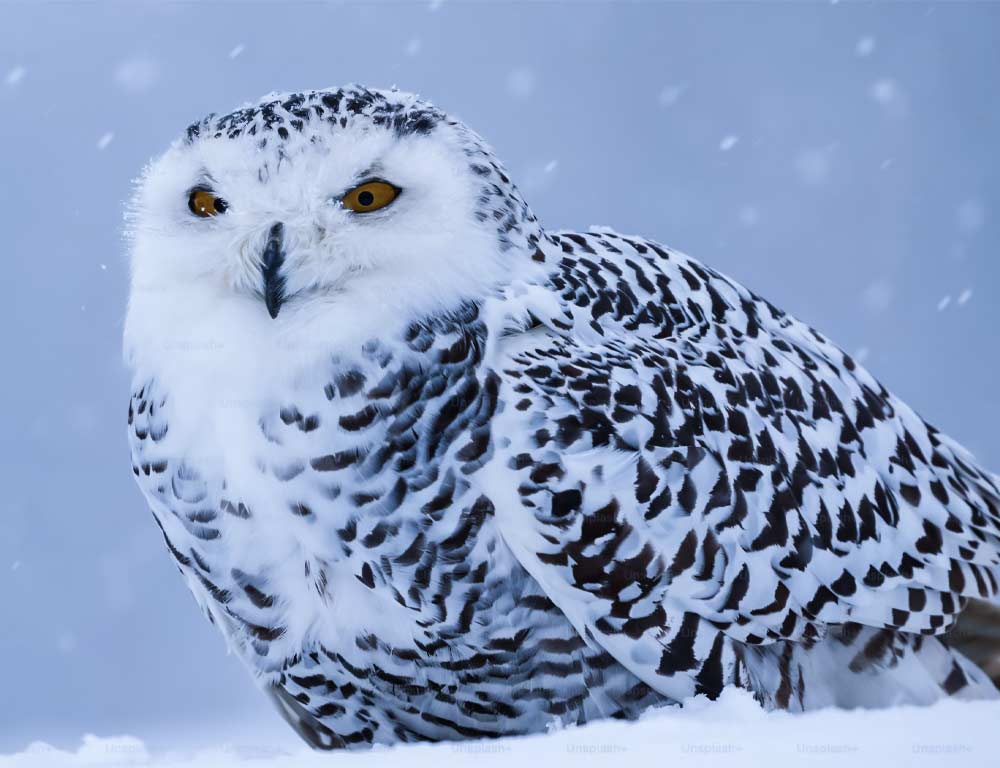
- Scientific Name: Bubo scandiacus
- Population: Irregular visitor
- Life Span: 9-10 years
- Size: 20-28 inches
- Weight: 3-6.6 pounds
- Food: Mainly lemmings, also birds and small mammals
- Wingspan: 4.2-4.8 feet
- Status: Least Concern
The Snowy Owl, a magnificent Arctic visitor, occasionally graces Indiana during winter migrations.
Distinguished by its pure white plumage and intense yellow eyes, this owl primarily preys on lemmings but adapts its diet to include birds and small mammals in non-Arctic habitats.
Its impressive wingspan and agile hunting tactics make it a formidable predator.
While the Snowy Owl’s irregular presence in Indiana contributes to its least-concern status, climate change impacts on Arctic habitats emphasize the importance of monitoring and conservation efforts to safeguard this iconic species.
6. Northern Saw-whet Owl
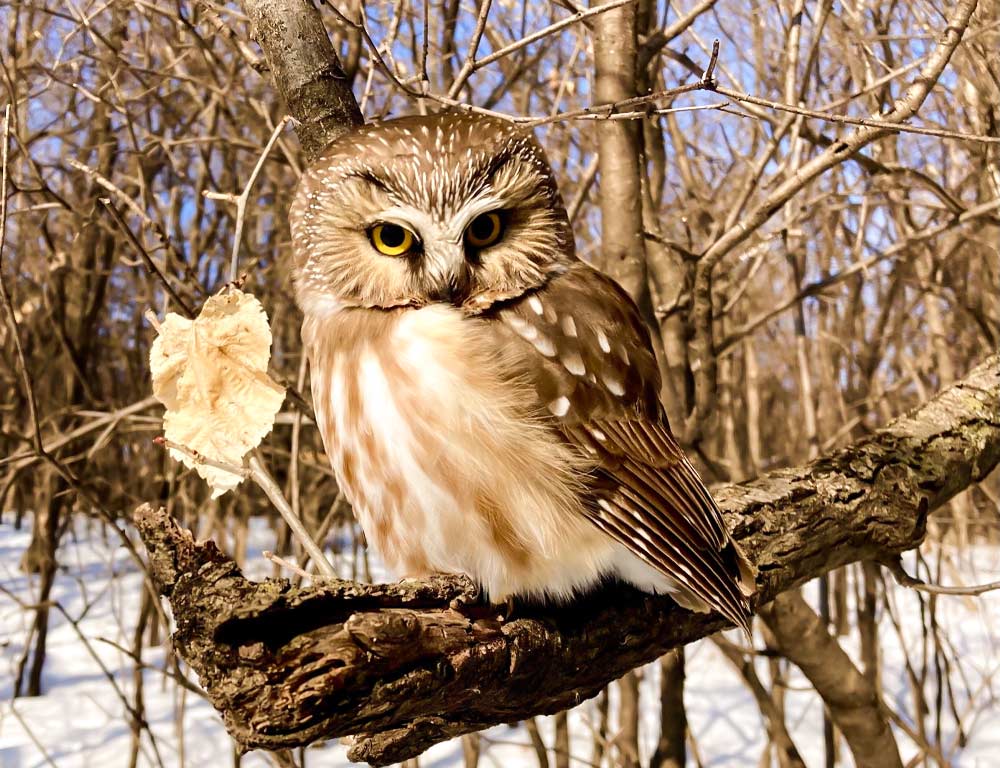
- Scientific Name: Aegolius acadicus
- Population: Stable
- Life Span: 3-7 years
- Size: 7-8 inches
- Weight: 2-5 ounces
- Food: Mainly small mammals, insects
- Wingspan: 16-18 inches
- Status: Least Concern
The Northern Saw-whet Owl, a compact and secretive resident, maintains a stable presence in Indiana’s woodlands. With a penchant for hunting small mammals and insects, this owl’s distinctive high-pitched “toot-toot-toot” call often goes unnoticed.
Its compact size, mottled plumage, and keen hunting skills allow it to navigate dense vegetation easily.
Despite a relatively shorter lifespan of 3-7 years, the Northern Saw-whet Owl is vital in controlling local rodent populations, contributing to the overall ecological balance.
As a least-concern species, the Northern Saw-whet Owl exemplifies the delicate harmony between these silent nocturnal hunters and the woodlands they inhabit in the Hoosier state.
7. Short-eared Owl
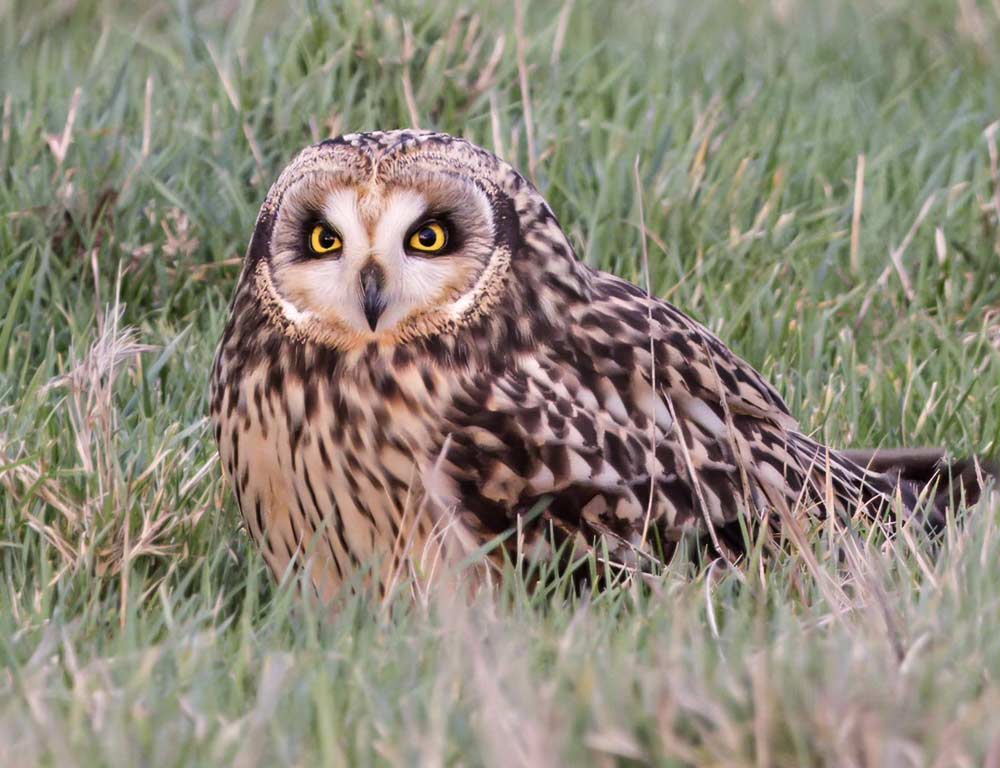
- Scientific Name: Asio flammeus
- Population: Declining
- Life Span: 3-5 years
- Size: 13-17 inches
- Weight: 7-16 ounces
- Food: Mainly small mammals, occasionally birds
- Wingspan: 33-43 inches
- Status: Special Concern
The Short-eared Owl, identified by distinctive facial disks and conspicuous “ear” tufts, graces Indiana’s grasslands. This owl targets small mammals with a primarily nocturnal hunting style, contributing to natural pest control.
Unfortunately, its population is declining due to habitat loss and human disturbances. Known for its agile flight, the Short-eared Owl engages in dramatic aerial displays during courtship.
With a life expectancy of 3-5 years, conservation efforts are crucial to secure the future of this special concern species in Indiana, emphasizing the importance of preserving its grassland habitats.
8. Long-eared Owl
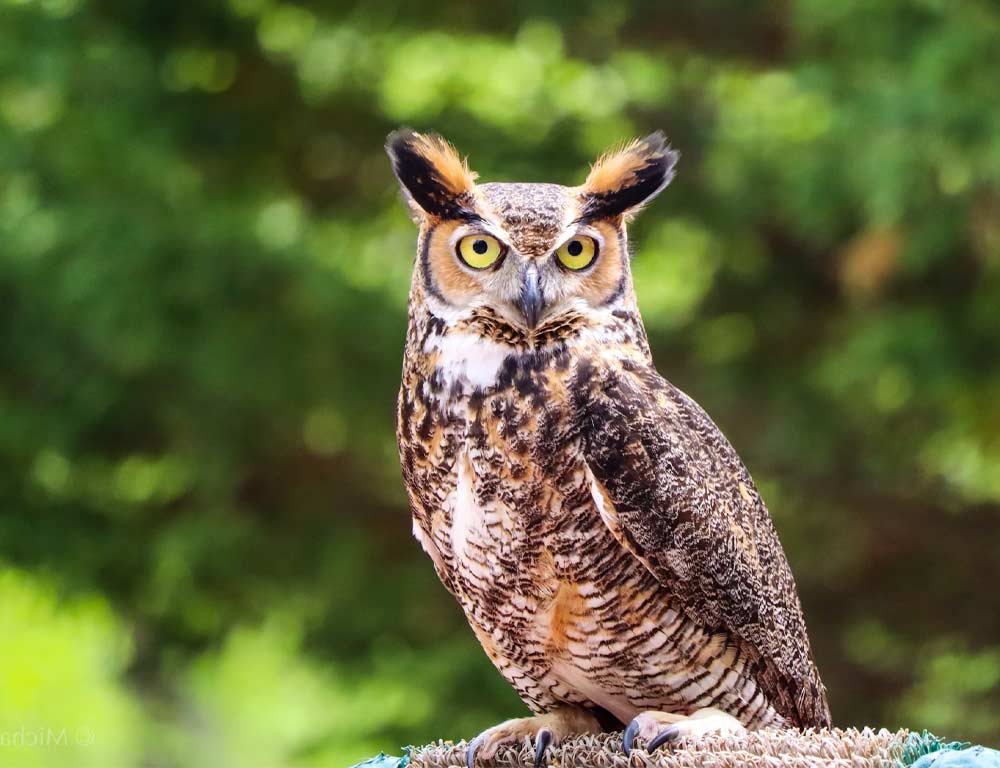
- Scientific Name: Asio otus
- Population: Stable
- Life Span: 4-10 years
- Size: 13-16 inches
- Weight: 7-16 ounces
- Food: Mainly small mammals, occasionally birds
- Wingspan: 35-39 inches
- Status: Least Concern
The Long-eared Owl, with its long “ear” tufts, is a silent denizen of Indiana’s woodlands. Thriving in diverse habitats, this owl primarily targets small mammals and occasionally birds.
Its cryptic plumage and preference for dense vegetation make it a master of camouflage. Known for its roosting behavior, forming communal roosts during winters, the Long-eared Owl displays unique social tendencies.
With a stable population and a lifespan of 4-10 years, this least-concern species embodies the delicate balance between predator and prey in Indiana’s varied ecosystems.
Despite facing threats such as habitat loss, the Long-eared Owl is a testament to the resilience of these fascinating nocturnal hunters in the state’s woodlands.
Necessary Steps to Preserve Owls in Indiana
Preserving the diverse owl species in Indiana requires a multifaceted approach that addresses various ecological, environmental, and conservation challenges.
By implementing strategic measures, we can ensure the well-being and sustainability of these enigmatic birds. Here are five necessary steps to preserve owls in Indiana:
Habitat Conservation
Preserving and restoring diverse habitats, including woodlands, grasslands, and wetlands, is paramount for owl conservation.
This involves maintaining the ecological integrity of these environments, limiting urbanization, and implementing sustainable land-use practices to safeguard nesting sites, roosting areas, and hunting grounds.
Mitigating Human Disturbances
Reducing human-induced disturbances, such as habitat fragmentation, noise pollution, and light pollution, is crucial.
Implementing measures to minimize disturbances during breeding seasons, especially near nesting sites, helps mitigate stress on owl populations and supports their natural behaviors.
Education and Awareness
Creating awareness about the importance of owls in Indiana’s ecosystems fosters a sense of responsibility among communities.
Education initiatives can include outreach programs, workshops, and informational campaigns to promote a better understanding of owl behaviors, habitats, and their role in maintaining ecological balance.
Monitoring and Research
Monitoring owl populations, nesting sites, and migratory patterns provides valuable data for informed conservation strategies.
Investing in research initiatives to understand the impact of environmental changes, climate variations, and human activities on owl populations is essential for adaptive conservation measures.
Collaboration with Stakeholders
Engaging in collaborative efforts with government agencies, conservation organizations, landowners, and the general public enhances the effectiveness of owl preservation initiatives.
Building partnerships allows for the pooling of resources, expertise, and support needed to implement comprehensive conservation plans and address challenges at a broader scale.
Preserving owls in Indiana demands a holistic and collaborative approach integrating habitat conservation, awareness-building, research, and strategic partnerships.
By taking these necessary steps, we can secure the future of these magnificent birds and ensure their continued contribution to the state’s rich biodiversity.
Wrapping Up
The conservation of owls in Indiana is a testament to our commitment to maintaining biodiversity and ecological harmony.
By addressing habitat preservation, minimizing human disturbances, promoting education, supporting research endeavors, and fostering collaboration, we lay the foundation for a sustainable coexistence with these remarkable birds.
With their enigmatic charm and ecological significance, owls embody the delicate balance of our natural ecosystems.
Through collective efforts and awareness, we can ensure that these nocturnal guardians’ haunting hoots and silent flights continue to grace Indiana’s moonlit landscapes for generations to come.